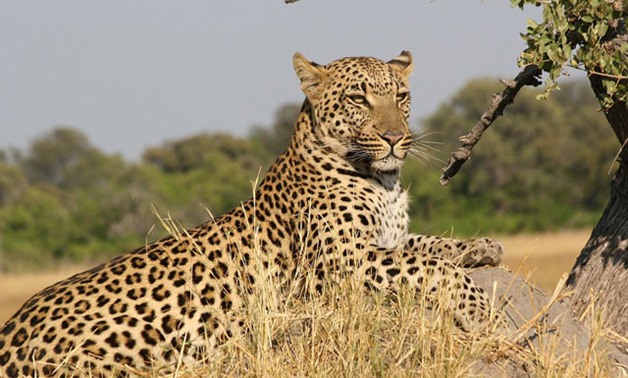
leopard at South African - AFP
Paris - 18 July 2017: It's not quite E=mc2, but scientists unveiled Monday a simple, powerful formula that explains why some animals run, fly and swim faster than all others.
Call it the "speed rule": strength alone does not determine top velocity because land mammals, birds and fish can only accelerate for as long as they can draw from available energy stored in muscle tissue.
An intermediate body size -- think cheetah, falcon or marlin -- is optimal for hitting that sweet spot between brawn and energy burst, the researchers discovered.
Too small, and there's not enough musculature; too big, and there's too much mass.
Knowing only an animal's weight and the medium it moves in -- water, air or across land -- is enough to calculate its maximum speed with 90 percent accuracy, they found.
The axiom even works retroactively for dinosaurs, they reported in the journal Nature Ecology & Evolution.
"Scientists have long struggled with the fact that the largest animals are not the fastest," said lead author Myriam Hirt, a biologist at the German Centre for Integrative Biodiversity Research in Leipzig.
If muscles were all that mattered "elephants would reach maximum speeds of about 600 kph (370 mph)," she told AFP.
Instead, tuskers peak at about 34 kph (21 mph).
Big beasts, in other words, run out of so-called anaerobic energy, supplied by the muscles, before being able to reach their theoretically maximum speed.
Among birds, falcons and hawks are the fleetest, clocking speeds well in excess of 140 kph (87 mph). Nearly as fast, the rock dove, wandering albatross and Ascension frigate could fly in their slipstream.
Cheetahs hold the land record, comfortably topping 100 kph (62 mph).
Not coincidentally, one of the their preferred prey -- the springbok -- can run almost as fast, along with other antelope, such as the blackbuck, historically hunted by big cats.
That's evolution at work, explained Hirt.
"Species that gain the most selective advantage -- predators and prey with few places to hide, for example -- will approach the predicted maximum speeds," she said.
Humans, by contrast, have not evolved over millions of years to outrun fast prey (or predators), even if they fall within the intermediate weight class corresponding to extreme speed.
Homo sapiens, it seems, invested in outsmarting other animals instead.
Long-limbed giraffes can hit 60 kph (37 mph) when motivated, and bears -- grizzly, brown and polar -- can top 45 kph (28 mph) for a few seconds before their fat-laden bodies slow them down.
The black marlin holds the known record in the sea, slicing through water at expressway speeds of 130 kph (80 mph), even faster than its quick cousin the Atlantic sailfish.
Full-grown Yellow fin and bluefin tuna can swim 70 kph (43 mph), only slightly faster than the quickest shark, the shortfin mako.
Killer whales -- which, like humans, teach their young hunting techniques -- are somewhat slower, but reign unchallenged at the top of the marine food chain.
Altogether, the researchers tested their new hypothesis against data on 454 species weighing in at one gram to 10 tonnes, from molluscs to blue whales, from gnats to whopper swans.
"Hirt and colleagues provide a unifying explanation for what sets the limits to maximum speed," Christopher Clemente and Peter Bishop, scientists at the University of the Sunshine Coast in Australia, wrote in a comment.
"The exciting part ... is that it applies equally well to animals on land, in the air and in water."
And to dinos, too.
The model matched data on the handful of dinosaurs for which scientists have been able to estimate running speeds.
The study estimates that lithe velociraptors could sprint at 50 kph (31 mph), while the lumbering T-rex could barely move at half that pace.
But that was still quick enough to catch a plant-eating Triceratops or the even slower Brachiosaurus, meals fit for the dino king.

Comments
Leave a Comment